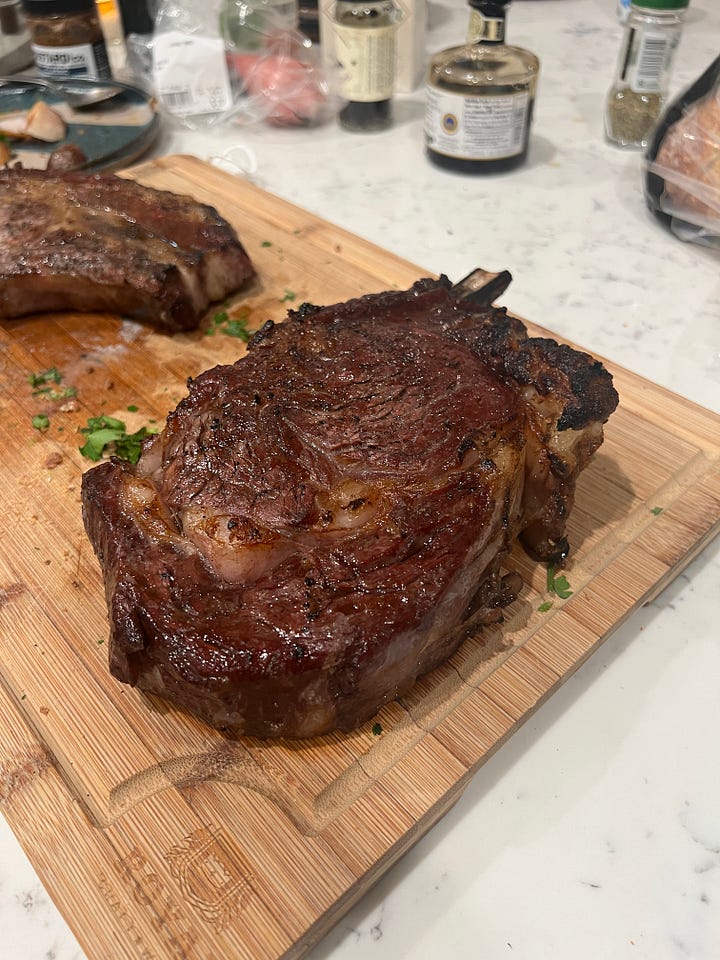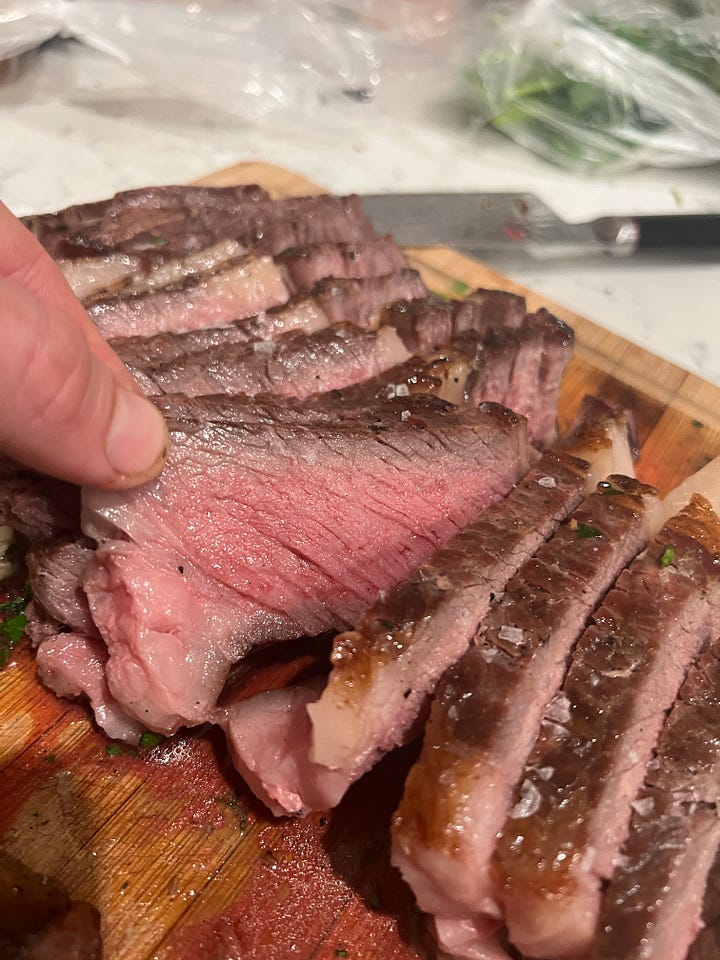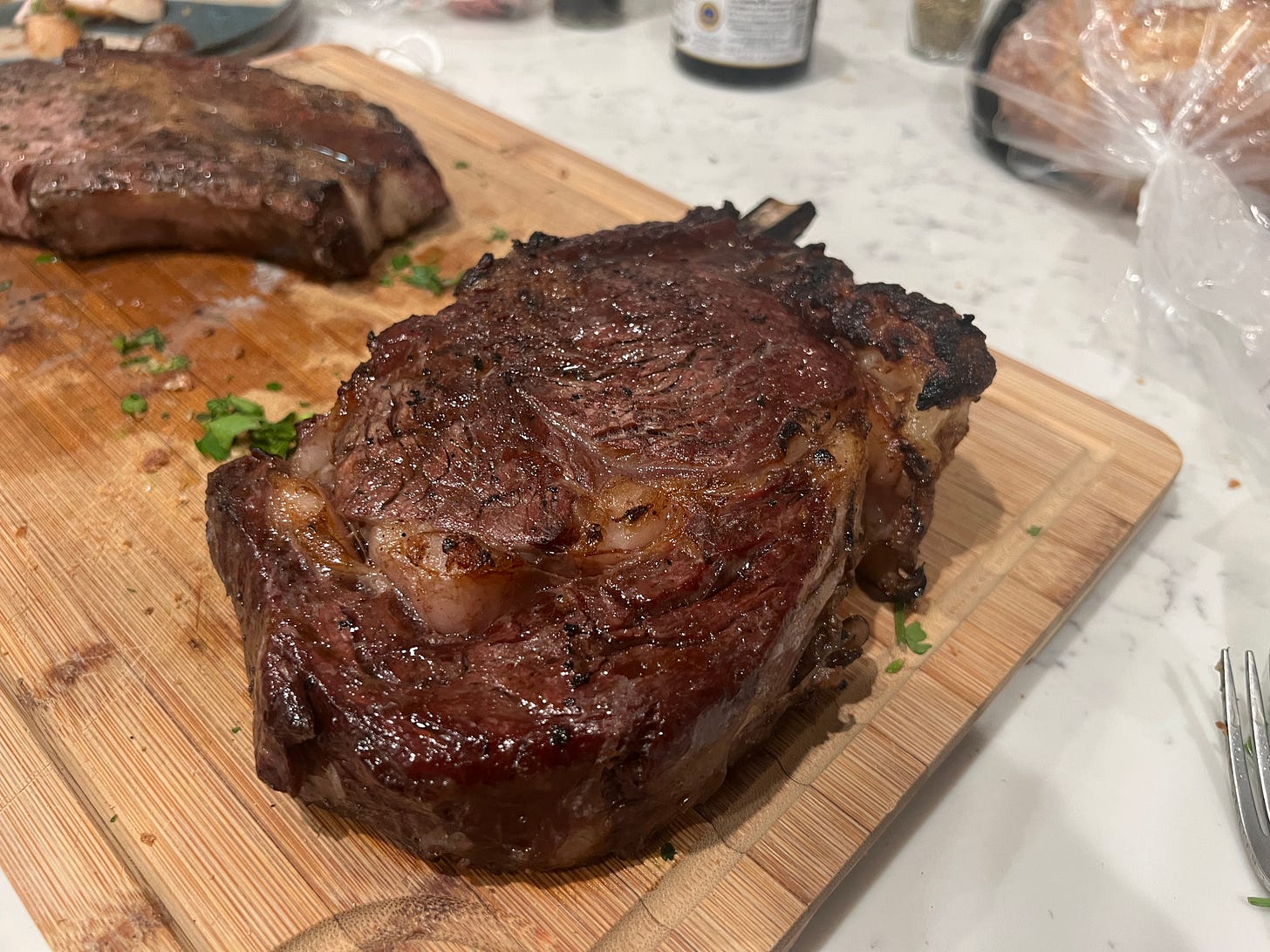The Reverse Sear
A foolproof method for cooking large steaks
Hey, everyone!
Today’s post is about a technique that I think every home cook should have in their repertoire. It’s called the reverse sear.
Often when cooking steaks, chefs will sear the meat in a skillet to develop a crust and then baste the steak in butter or throw it into an oven to finish cooking through internally. This tends to work well for thin cuts of meat that can cook through evenly in a short time, but it’s not as reliable for thicker cuts.
The reverse sear flips this sequence of events— first the meat is slow-cooked in an oven until it reaches the right internal temperature, then it’s seared in a hot skillet right before serving. The gentle heat of the first step ensures that the steak cooks evenly, and the high heat of the second step ensures you get a good sear.
Any time you cook a steak, you have two goals:
Cook the meat evenly all the way through without overcooking it.
Get a really nice crust on the outside.
The reverse sear is probably the most reliable way of accomplishing both of these goals, especially for thick cuts of meat where cooking over direct heat would burn the outside before the inside cooked through. This method gives you much of the precision of sous vide cooking without having to cook your steak in hot plastic.
As always, let me know if you’ve got any questions!
Myles
Ingredients / Equipment
a large steak
salt
a meat thermometer (I like this brand)
an oven
a cast iron, carbon steel, or stainless steel skillet (or a hot charcoal grill) for searing
Process
If using this method, I highly recommend dry brining your steak in advance. It really improves flavor and texture with large cuts of meat. If you’ve done this, you don’t need to add more salt before cooking.
Start by heating your oven to 250-275°F.
If you didn’t dry brine in advance, season your steak generously with salt.
Place the steak on a sheet tray or a wire rack over a sheet tray.
Put it in the oven and allow it to slow cook, flipping it a few times throughout the cook.

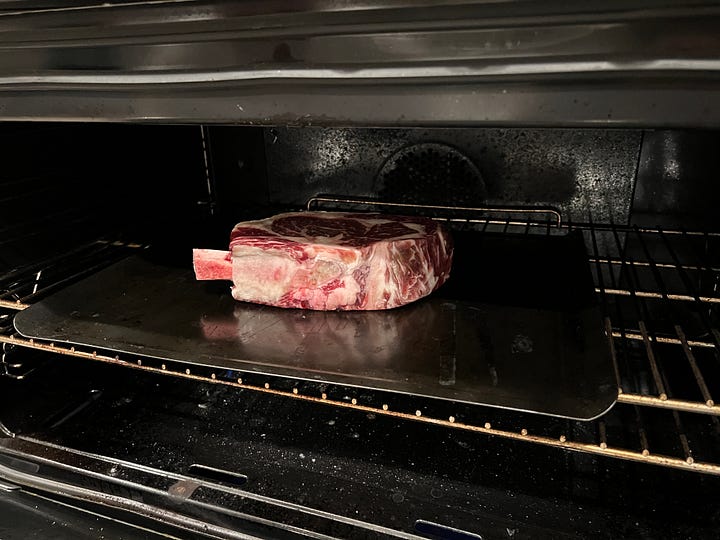
Use a meat thermometer to gauge the internal temperature of the steak. You want to pull it from the oven about 15° below your final temp (since it will continue to cook from the sear and the residual heat).
For medium rare, you want to aim for a final temperature of 130°F. So I pull the steak from the oven at about 115°F when probed in the middle.
For medium, you want a final temperature of 140°F, so I’d pull the steak around 125°F.
How long this takes depends a lot on your oven and the thickness of the steak. For smaller steaks, this can be as quick as 20 minutes, while for larger steaks it may take up to 40.
Next, heat a cast iron, carbon steel, or stainless steel pan over ripping high heat. When the pan is almost smoking, add in a knob of either beef tallow or ghee. Sear the steak on both sides until a beautiful crust is developed (this should only take a minute or two per side).
Alternatively, you can sear it over an extremely hot charcoal or wood grill (like the fourth photo below).
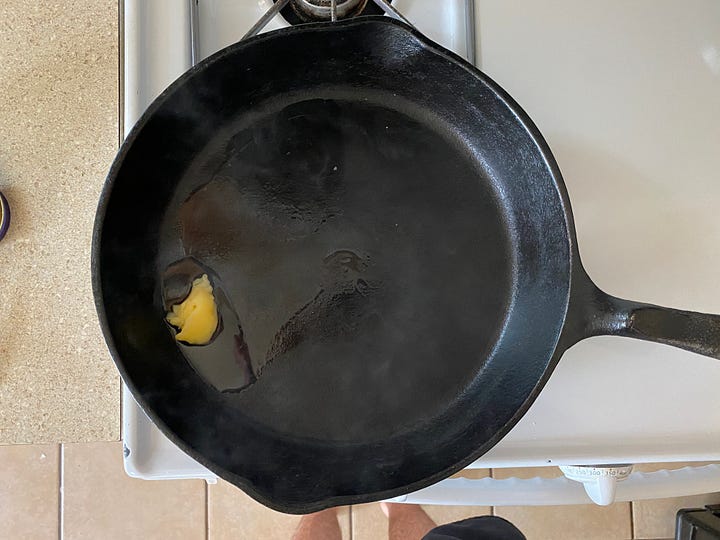

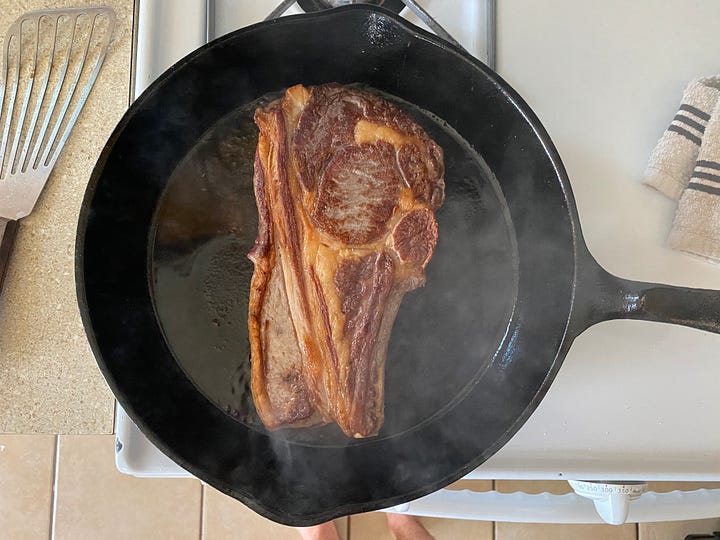
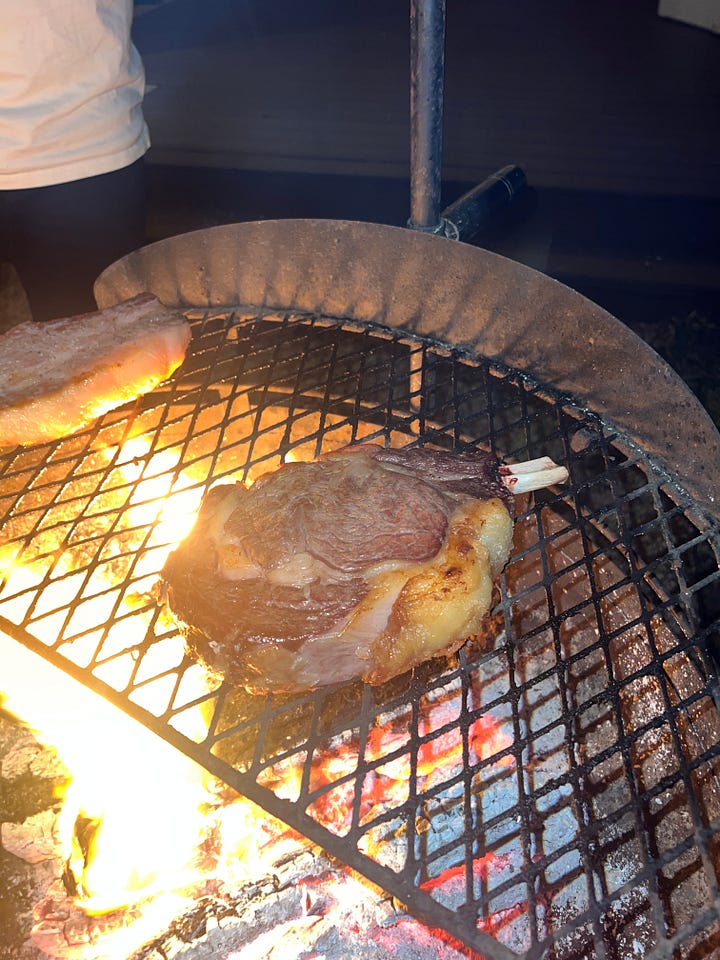
Once your steak is seared, give it a few minutes to rest. You don't need as much rest time for a reverse seared steak because the initial cook was so gentle, but you still want to give it time to relax after the intense heat blast of the sear.
When you're ready to serve, cut the meat against the grain and serve it up. Then enjoy one of the best steaks of your life.
